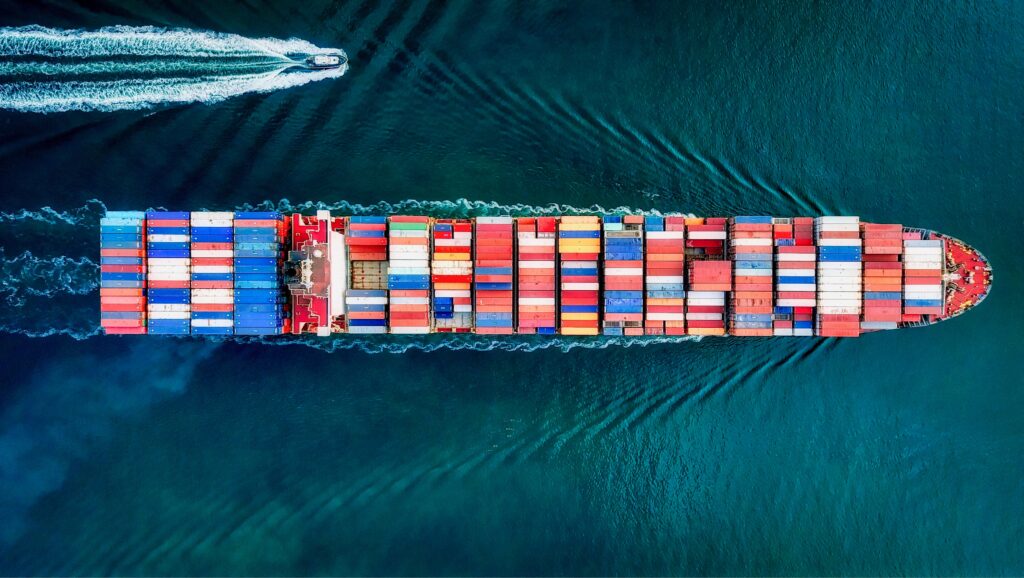Green Your Freight
Environmental Defense Fund
Globally, transport is the fastest growing source of greenhouse gas (GHG) emissions, accounting for almost a quarter of all CO2 emitted. Reducing the impact of freight transport modes on climate change is a major, long-term challenge for transport companies, but critical progress can be made, starting today.

Our appetite for goods of all kinds — food, electronics, apparel, housewares — is growing. And the supply chains that make and deliver these goods are increasingly global. As a result, products travel farther than ever before, and that means greater fuel consumption and continued local air pollution challenges that harm public health. Freight transport accounts for 8% percent of global emissions and if no changes are made, freight is on track to become the highest emitting sector by 2050.1
But companies are recognizing the enormous potential of green freight strategies to uncouple freight emissions from freight activity, driving down costs and increasing profitability in the process. The actions you can take include deploying mature solutions, supporting innovation, and advocating for public policies that will accelerate the transition to zero emissions freight.
Current Solutions
The first step in a green fleet journey is establishing metrics. Well-defined, performance-based metrics keep focus on achieving meaningful, measurable, cost-effective GHG emissions reductions. Combining a transparent measurement and reporting system with freight efficiency and emissions reduction targets will build credibility and support your company’s efforts to decarbonize.
The next step is to assess your opportunities. Trucks are responsible for the majority of freight transport GHG emissions and significant progress is being made to improve the feasibility of electric trucks at scale. But electrification is not the only solution. There are many other things you can do now, across all modes of transport, to help your company reach your long term sustainability goals, as well as to make a tangible impact today. Solutions that are technically and commercially feasible include:
- Freight Optimization: Getting the most out of every move by increasing the load factor of your trips will reduce the emissions intensity of your business. Favoring ocean over air, and rail over road (when using internal combustion trucks) will also increase efficiency and reduce overall miles and GHG emissions. The use of intermodal terminals — where a container is moved from one mode to another — can allow you to reap the efficiency benefits of rail as well as the flexibility of trucks. Real-time tracking of freight travel, smart fleets, and ongoing, iterative route optimization in response to changes in demand can also reduce overall freight miles and reduce emissions.2
- Fuel Optimization: actions like good driving habits, preventative vehicle maintenance, and improvements to vehicle aerodynamics can reduce fuel requirements, which will lower costs and reduce emissions. Sustainable fuel alternatives have yet to reach full commercial viability, but clean ammonia (made from clean hydrogen) and certain bio/synfuels are emerging as promising potential solutions for transport methods that cannot be easily electrified.
The Innovation Imperative
While there are a number of solutions that can be deployed now to reduce freight emissions, there remains a significant innovation gap for zero emissions freight. This is particularly the case for long-distance aviation and shipping, for which electrification is not feasible and sustainable fuels are not yet available at scale. Your company has a role to play in catalyzing the technological breakthroughs required to decarbonize freight transport.
Actions your company can take to support innovation in freight transport include:
- Signaling long-term demand for emerging zero emission solutions through targets, commitments and purchasing agreements
- Adopting in-house pilot projects and feasibility studies of innovative solutions that aren’t yet market ready
- Forming partnerships and coalitions with industry groups, other freight carriers and customers to bridge research and funding gaps needed to scale solutions
It is also important that your company includes equity considerations when innovating. Marginalized populations have disproportionately shouldered the burden of climate change, for example by breathing the polluted air from nearby factories and working dangerous supply chain positions. The future must be different. Companies at the forefront of innovation may succeed in their climate pledges but will fail in their commitments to social responsibility if the planet’s most disadvantaged communities continue to be left behind.
Advocate for Policy Change
Scaling zero-emission freight solutions requires establishing the conditions in which these solutions can thrive. Public policy has a critical role to play in creating these conditions. Protective emission standards and market targets, such as the Advanced Clean Truck Program and the EPA Phase 3 GHG standards, ensure that fleets and shippers have access to zero-emission options. Purchase incentives and tax credits, such as those for port electrification and clean hydrogen contained in the Inflation Reduction Act reduce the upfront investments companies must make and help scale these solutions.
Further policy support is required if the shift to zero emissions freight transport is to occur at the pace required for limiting the worst impacts of climate change. Freight networks cross local, national, regional and international boundaries, and policy action is needed at all levels. One of the most powerful levers your company has in greening freight transport is your political influence. Working with your trade associations and other players in your value chain and sector can further amplify your voice.
Policy actions to advocate for that will support greening freight include:
- City, state and federal clean transportation policies
- Orienting federal R&D to decarbonizing transport
- Low-carbon fuel incentives and fossil fuel disincentives, especially for aviation and shipping
- Funding for electric charging networks
- Vehicle emissions standards and fuel standards
- Power grid decarbonization
- Rail incentives for freight
- Aviation decarbonization goals3